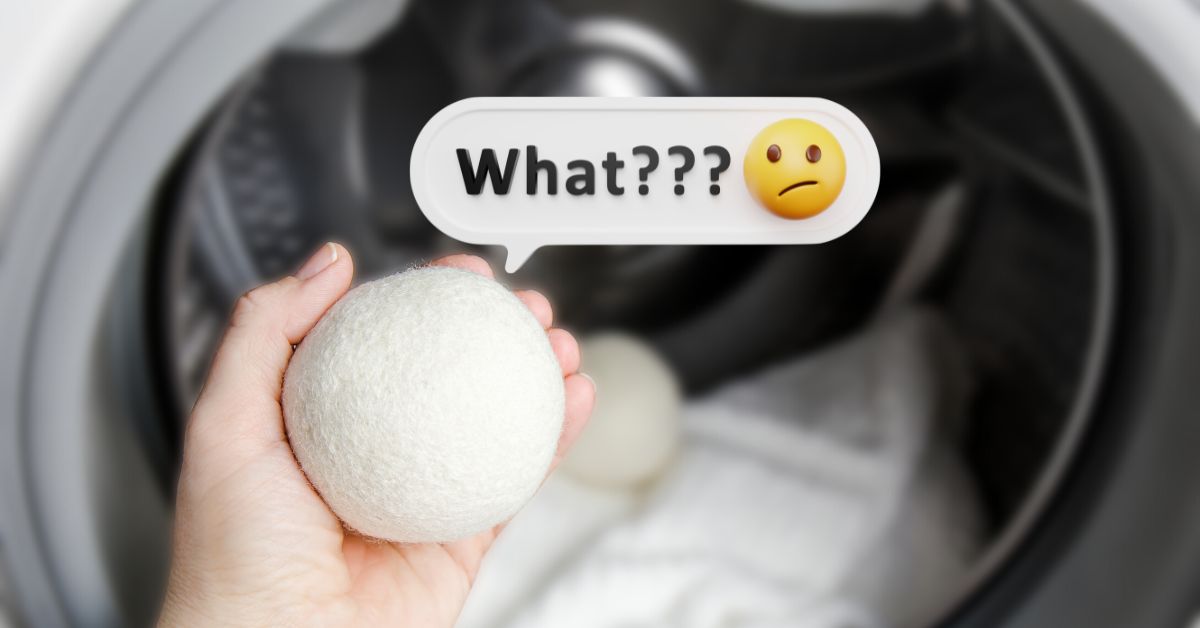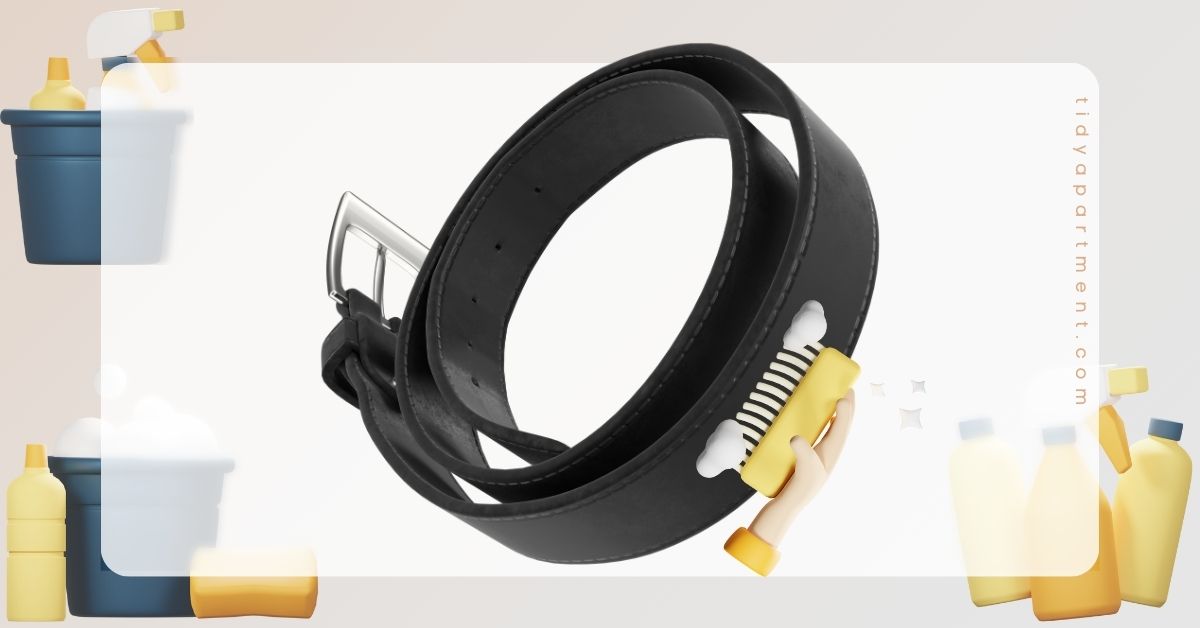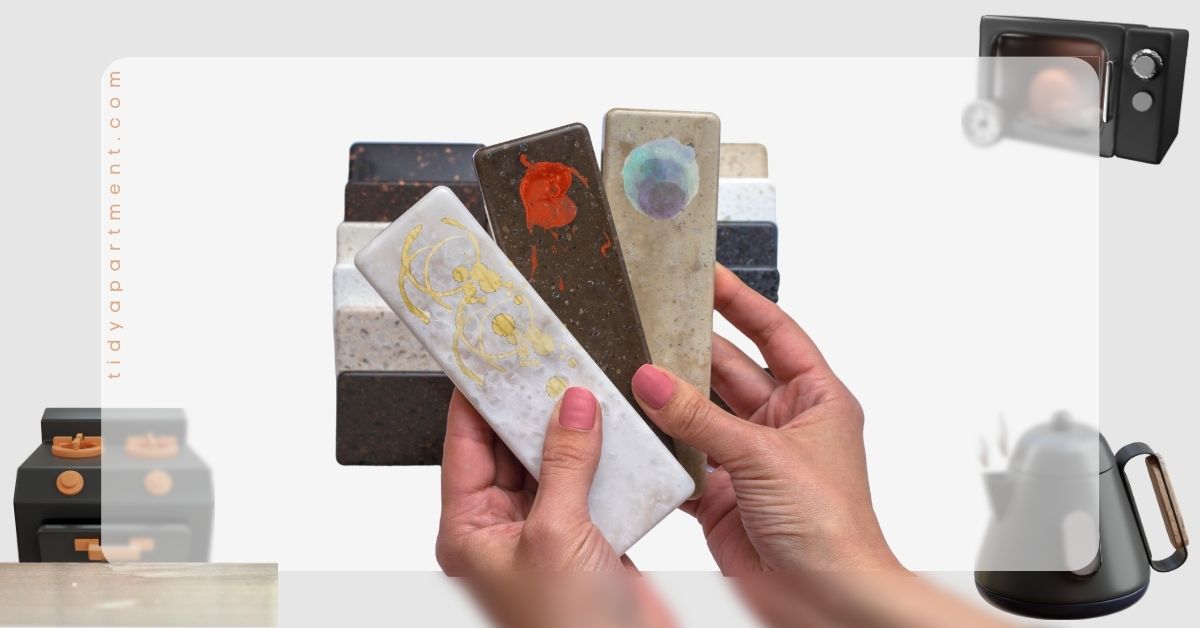Who doesn’t like shopping at a thrift store? I’ve also been there, but after countless hours of research, trial, and error, I’ve found the 3 best ways of washing vintage clothes. You can either hand wash, machine wash, or dry clean vintage clothes. Washing them requires a delicate touch to ensure their preservation and longevity.
The challenging part of vintage clothes starts with the care label, which is mostly missing or unclear to read. You may need to find out whether a garment needs to be hand-washed, machine-washed, or dry-cleaned.
After successfully rejuvenating my vintage find, I realized that there are many others out there who share the same love for vintage clothing but lack the confidence or know-how to wash vintage clothes properly. That’s why I decided to share my experience and expertise with you.
Related: How to wash thrifted clothes?
Page Content
Cleaning Overview




Pretreatment
Examine the vintage clothing item for any signs of damage, such as loose seams, weak fabric, or delicate embellishments. Make any necessary repairs before proceeding with washing.
How to Hand-Wash Vintage Clothes?
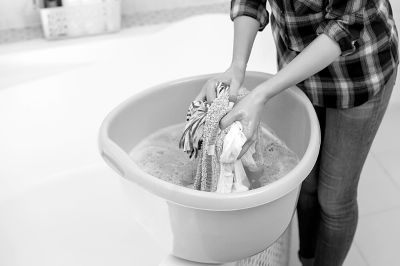
What Will You Need
Supply
- Gentle detergent
Tools
- Basin / sink / tub
- White cloth
- Clean dry towel
Hand washing is the best and simplest way to wash vintage clothes.
- Clean the basin, sink, or tub where you wish to wash your vintage clothes.
- Add lukewarm water to the basin, sink, or tub. Fill the basin enough to submerge the clothing item fully.
- Choose a gentle detergent specifically formulated for delicate fabrics. Avoid using bleach or harsh chemicals, which can cause discoloration or damage.
- Conduct a colorfastness test in a small inconspicuous area with a damp white cloth. If there is any color transfer, the clothing may not be appropriate for hand washing. Such clothes should be dry-cleaned only.
- If you see any visible stains on the vintage clothing, apply a small amount of stain remover or mild detergent directly to the affected area. Gently rub the stain with your fingers or a soft brush. Avoid scrubbing too vigorously to prevent damage.
- Later, add the vintage clothes to the basin filled with lukewarm water and mild detergent. Gently agitate the water with your hands to remove loose debris or dirt from your clothes.
- Soak the garment in the sink for about 15 to 20 minutes. Periodically swish the clothes around gently to encourage the dirt to release.
- Keep a continuous eye on the bleeding or shrinking of the garment.
- Drain the water from the basin, sink, or tub once it turns yellow.
- Remove excess water from the vintage garment by pressing it gently.
- Ensure you pull the garment out of the water by holding most of its area and not lifting it by its corners. It may break the fibers or stretch them.
- Refill your basin, sink, or tub with water.
- Soak the garment again. Repeat the process until the water stops turning yellow.
- Stop only when you are sure there are no suds or detergent residues.
- Lastly, squeeze the garment gently to remove excess water.
- Hang the garment if it is lightweight. Lay it on a flat surface to dry if the garment is heavy.
You can hand wash garments of pure silk, rayon, cotton, linens, and polyester blends that are heavily decorated or embroidered. Send crepes, knits, and raw silk garments to a professional cleaner.
Tips for Hand-Washing Vintage Clothes
The following tips will help you hand-wash vintage clothes safely.
- Close all buttons, eyes, hooks, and zippers before you toss the garment into the washing container. They may get caught up during the washing, possibly snagging or tearing.
- Test a small part of the garment going for its first wash. Test a hidden hem with water before you put the entire garment in the water. You will understand if fabric shrinking, dye fading, dye bleeding, etc., are occurring. Consider cleaning the garment from a professional.
- Remove stains from vintage clothes after extensive research. Directly executing a method may ruin your garment. Avoid using heat on stained vintage clothes. It may permanently stain your garment. Ensure the stain is completely gone before drying the garment.
- Vintage fabrics are often delicate and can be prone to stretching or tearing. Be gentle when handling the garments and avoid any rough agitation or wringing.
- While it’s important to soak vintage clothes to loosen dirt and stains, avoid submerging them too long. Prolonged soaking can weaken the fabric and lead to damage.
- There may be a few stubborn clothes that are resistant to cleaning. We recommend spraying Vodka from a Mister bottle over the garment. Vodka helps disinfect and deodorize.
- Avoid hand-washing a mix of multiple vintage clothes. There’s always a risk of color bleed. Plus, the clothes rub against each other, damaging each other.
How to Machine Wash Vintage Clothes?
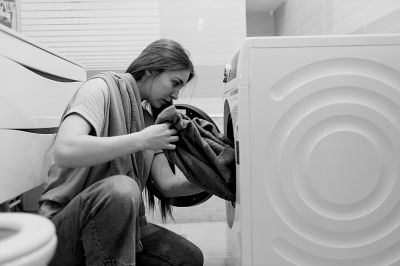
What Will You Need
Supply
- Gentle detergent
Tools
- Washing machine
- Mesh laundry bag
- Clean dry towel
We recommend avoiding washing vintage clothes in the washing machine. However, there are always a few exceptions to any rule.
- It’s possible to machine wash vintage clothing with clear and visible instructions to wash it in a washing machine. It’s crucial to wash them separately and on a delicate cycle. You can wash vintage clothes of similar colors in the washing machine. Ensure all buttons, hooks, or zippers are closed before putting them in the washing machine.
- Wrap delicate garments in a mesh laundry bag to protect them. It keeps them safe from the agitation in the machine and prevents them from snagging, pulling, or twisting.
- Opt for cold water instead of hot or warm water. Cold water is gentler on the fabric and helps prevent color bleeding or shrinkage.
- Select a mild, gentle detergent that is suitable for delicate fabrics. Avoid using bleach or harsh chemicals, as they can damage vintage clothes.
- Set the machine to a low or delicate spin cycle to minimize stress on the fabric. High-speed spins can cause stretching or damage, especially to fragile vintage items.
- It’s generally best to avoid using a dryer for vintage clothes, as the high heat and tumbling can be harsh on the fabric. Instead, opt for air drying. Lay the washed vintage clothes flat on a clean towel or drying rack to air dry. Reshape the garment to its original form and smooth any wrinkles or creases.
Remember, machine washing is generally not recommended for delicate vintage items or those with intricate embellishments. Hand washing also gives better results for most vintage clothes than machine washing. Vintage garments made of cotton, nylon, polyester, spandex, or synthetic materials usually wash nicely in the washing machine.
Tips for Machine Washing Vintage Clothes?
- Before placing vintage clothes in the washing machine, turn them inside out. This helps to protect the outer surface and minimize abrasion or friction during the wash cycle.
- Don’t overcrowd the washing machine with too many vintage garments. Overloading can lead to excessive friction and cause damage.
When Should You Not Wash Vintage Clothes?
You must avoid washing vintage clothes in certain situations.
- The manufacturing date of the garment is before 1940.
- If the fabric is of wool, is fragile, lace contains beading, etc.
- If a vintage garment has a stain that cannot be easily removed or treated, washing it may spread or set the stain further.
- If you have vintage clothes with significant monetary or historical value, avoid washing them yourself. Instead, consult a professional who specializes in the care and preservation of valuable garments.
- If the vintage clothing is severely degraded, weakened, or showing signs of deterioration, washing can further accelerate the damage.
Dry cleaning is the ideal way of cleaning vintage clothes. On a tight budget, we recommend buying at-home dry cleaning tools. Alternate ways to wash old vintage clothes are soaking, hand washing, or spot cleaning.
How to Dry Vintage Clothes
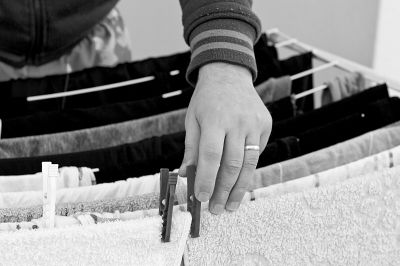
Air-dry vintage clothes most of the time to keep them in shape for a long time. Do not dry vintage clothes using high heat, as it may shrink and damage the garment. Avoid drying vintage clothes in the dryer as it can damage or shrink them.
You can hang lightweight vintage clothes on a clothesline. Or allow them to dry on a towel resting on a flat surface or rack. It helps prevent any stretching or deformation of the garment.
1. Steps for Drying Vintage Clothes Outside
- Hang the clothes on a clothesline if you have one. Allow the clothes to drip. Drying these clothes will take substantial time, so plan your schedule accordingly.
- Do not hang a stretchy vintage garment on the clothesline. It may stretch and deform. A drying rack works well for drying these types of vintage clothes.
2. Steps for Drying Vintage Clothes Inside
- Place a towel flat in the room dedicated to drying clothes.
- Place the washed vintage clothes on the towel.
- Dab the clothes dry with a towel.
- Repeat the dabbing until you remove as much excess water as you can. It prevents the water from dripping as we dry the garments from the inside.
- You can also hang non-stretchy clothes on a hanger.
- Hang stretchy clothes on a drying rack.
How to Iron Vintage Clothes?
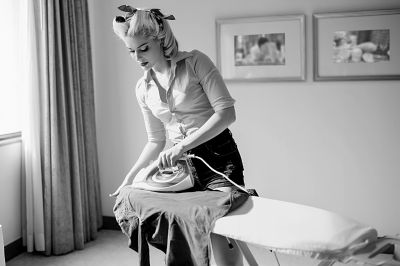
Ensure that it’s possible to iron your garments before you wish to. Avoid ironing crepe, velvet, embroidered, or exceptional trims like beads/sequins.
Use an iron at low heat to iron nylon, rayon, polyester, silk, and other synthetic items. Ironing at medium heat is ideal for a mix of natural and synthetic fabric, such as cotton-polyester. Press cotton and linen at a high heat setting.
You can also steam vintage clothes using a professional or handheld steamer. It allows quick ironing and irons the clothes with zero chances of ironing.
Avoid ironing velvet clothes. Instead, steam them from the inside. The thick nap in the velvet may be damaged if ironed. For velvet clothes, dry cleaning is the first option.
For rayon, always steam on the inside. Otherwise, you may notice shiny spots on the garment. If you still wish to DIY, steam it from the inside and gently stretch the garment to have an excellent finish.
Dry Cleaning For Vintage Clothes

Find a dry cleaner with a good reputation in your locality.
- Cotton, linens, and Silks manufactured after 1970 can go for dry cleaning.
- Wool may shrink after washing. Therefore, consider dry-cleaning them.
- Velvet may develop patches and other trims if ironed. Hence, we recommend dry-cleaning velvet garments.
When Should You Avoid Sending Clothes for Dry Cleaning?
- Old silk clothes are delicate and can be damaged if dry-cleaned.
- If your vintage clothes have rhinestone buttons or adornments. Consider removing them before dry-cleaning.
- Clothes with heavy beading.
- Send Fur and leather to the furrier and leather specialist.
Related: How to wash a thrifted leather jacket?
Bonus Tips to Take Care of Vintage Clothes
- Handle delicate fabrics with extra care.
- Always wash your hands before touching the garments after a makeup, cooking, or eating session. The grease or oil from your hands may transfer to your clothes, staining them.
- Always hang the clothes inside out to air-dry them.
- Avoid packing them in a carton where the possibility of stinking is frequent.
- Put on jewelry after wearing the vintage garments and remove it gently after the event. It will help you prevent holes and snags.
- Ensure your gown or similar garment doesn’t drag while you walk.
- Avoid storing your vintage garments in plastic bags. The clothes require breathing, so pack them in old pillow covers or sheets.
- Do not use metal hangers. Metals may rust and damage your clothes eventually. In addition, stretching may occur in your clothes.
- Fold heavy clothes, such as beaded gowns or sweaters.
- Do not fold and stack heavy items. Wrinkles and fold marks may develop on the clothes if you store them for a long time.
- Store your vintage clothes anticipating climate change and planning accordingly. A humid climate may develop mold and mildew. At the same time, a hot climate may discolor the garment. There’s always the risk of pests and critters getting attracted to vintage clothes.
- Always store fur items away from light in a cedar closet or chest. Fur items are sensitive to light and will discolor or fade.
- You might use lavender to keep the pests away. However, ensure it is near the vintage clothes but not touching them.
- What is the best way to wash vintage clothes?
Dry cleaning and hand washing is the best way to wash vintage clothes.
- How did people wash clothes 150 years ago?
Before modern detergents came into our lives, washing clothes was done with animal fat or lye.
- How do you get yellow out of vintage clothes?
Getting yellow out of vintage clothes is possible with baking soda and hydrogen peroxide. Mix both components in the same proportion and create a paste. Apply this paste to the stain and allow it to set for about an hour.
Conclusion
Washing vintage clothes may pose many challenges. Many garments miss the washing instruction label, and it’s hard to identify whether they can go for hand-wash, machine-wash, or dry-cleaning.
You can choose from hand-washing, machine-washing, or dry cleaning for washing your vintage clothes.


